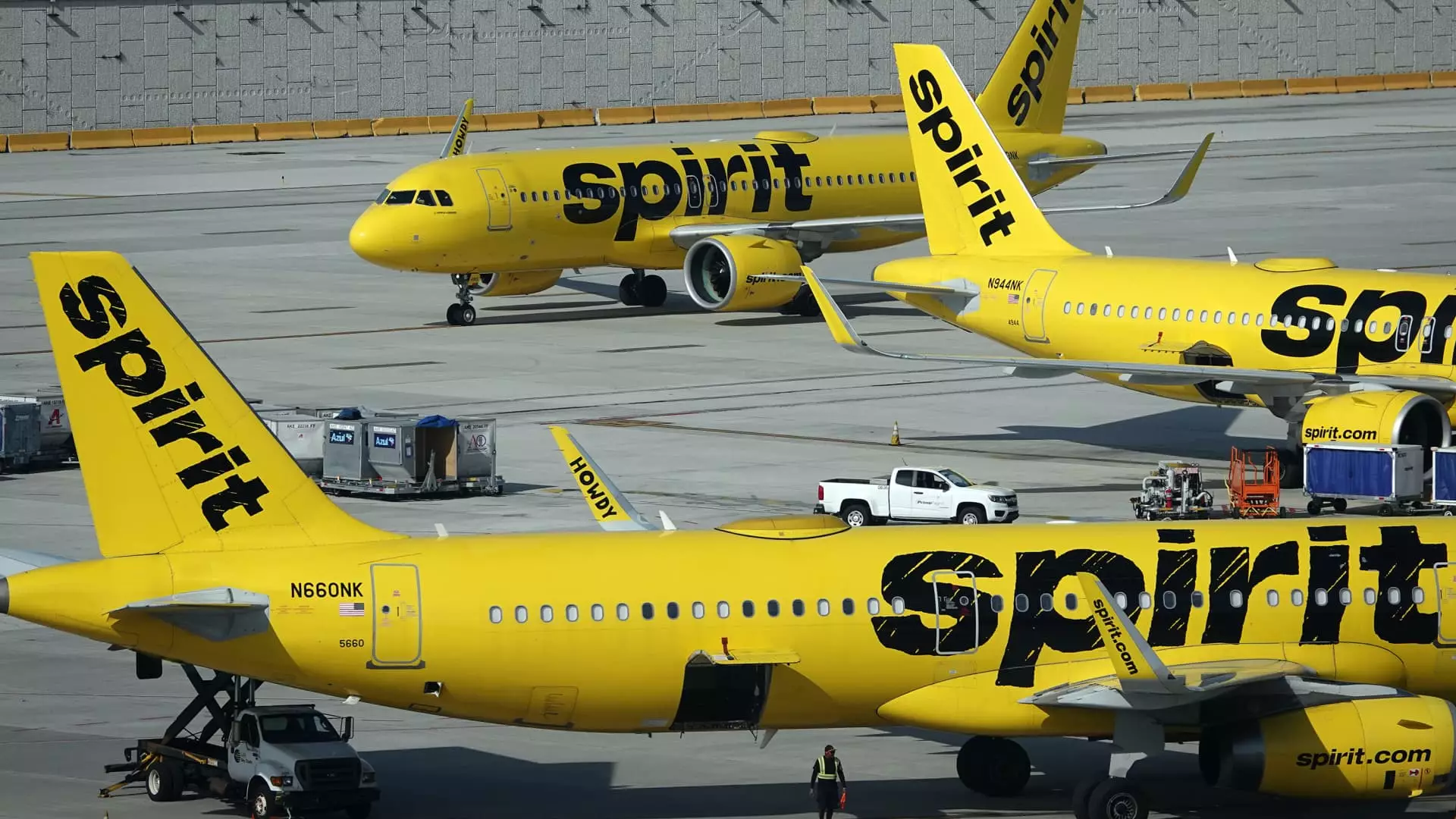In a decisive turn of events, Spirit Airlines has announced an ambitious restructuring plan aimed at navigating through its significant financial hardships. The budget airline is set to implement cost-cutting measures and divest a portion of its aircraft fleet, a move that has sparked rising shares despite an overall tumultuous year. By opting to sell 23 older Airbus aircraft, Spirit aims to generate approximately $519 million, as detailed in a recent filing with regulators. Such a financial influx could provide the necessary liquidity to stabilize a company that has been under duress since the onset of the COVID-19 pandemic.
The operational struggles of Spirit Airlines are emblematic of the broader challenges facing many carriers in the post-pandemic travel landscape. With an overwhelming dependency on discretionary travel, the airline is grappling with fluctuating demand, exacerbated by ongoing issues with its Pratt & Whitney-powered aircraft. Moreover, the recent push to refinance over $1 billion in debt has been kicked further down the road, now set for potential resolution only by late December. This delay serves as a temporary reprieve, allowing Spirit to maintain vital operations with its credit card processing partners while they craft a path to financial recovery.
In its pursuit of efficiency, Spirit is expected to cut nearly $80 million in costs, a sizable portion of which will arise directly from workforce reductions. Although specific details about the number of job cuts remain undisclosed, it has already furloughed around 200 pilots since September. Additionally, the airline indicated that its capacity for 2025 will decrease significantly more than previously forecasted, marking a substantial shift in its operational strategy. The silver lining for flight attendants is that a considerable number have opted for voluntary leaves, potentially easing staffing pressures.
Interestingly, amidst these operational shifts, discussions have reignited between Spirit and Frontier Airlines regarding a potential merger. This speculation has contributed to an uptick in share prices, reflecting investor hope in collaborative synergies that could bolster both airlines against ongoing market challenges. Previously, the merger discussions had faltered due to JetBlue’s bid to acquire Spirit outright, which was recently blocked by judicial ruling. The anticipation around a Spirit-Frontier partnership may signal a strategic pivot for both airlines as they seek greater resilience in the competitive low-cost sector.
Despite these ongoing struggles, there is a glimpse of light as Spirit has recently adjusted its third-quarter negative operating margin forecast to 24.5%, a marked improvement from an earlier estimation that suggested a downturn of as much as 29%. Although the environment remains precarious, these calculated adjustments highlight Spirit Airlines’ resilience and commitment to overcoming obstacles. As the airline industry continues to shift, Spirit’s ability to adapt may ultimately dictate its path to future profitability. The forthcoming months will be critical, not only for Spirit but for the broader aviation sector, as they navigate the complexities of post-pandemic recovery.


Leave a Reply